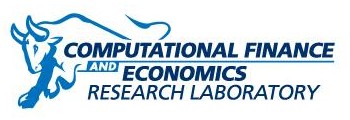
Tournament 2009 is part of the Intelligent Problem Solving (CC283) module at the University of Essex. It is also part of the bargaining project. The tournament is open to all students taking the CC283) module. To test the strength of this year's entries, some of the participants in previous tournaments were selected to participate. The rules of Tournament 3.2 (2001) are adopted. The tournament is judges by the parameters shown below (which remains the same from Tournament 3.2), though alternative parameters were used to assess the strength of the programs submitted.
All buyers will be played against all sellers, under rules defined by me (click here for details of the tournament rules). The winners are the buyer and the seller that accumulate the highest profit.
The best buyer and the best seller entries by my CC283 students in 2008-09 will each receive a prize from me. The prizes includes an certificate (which will be done electronically this year -- they tend to keep for longer) plus a bottle of wine (this is not electronic, in case you ask) from me. This is for fun. The best buyer among this year's entries is written by Jason Caits-Cheverst (certificate); the best seller is written by Philip Street (certificate). However, they have not been able to beat our past champions. Robert Stacey's seller and Christopher Musgrave's buyer remain the strongest players in Tournament 2009.
Beyond fun, there could be serious research in it. This tournament is part of the Bargaining Project in the Computational Finance & Economic Research Lab. Bargaining is an important branch of game theory. Game theorists traditionally study games through mathematical modelling and analysed. Rules in this Tournament make it difficult to find subgame equilibrium mathematically (the players do not know their opponents' constraints, the distribution of costs, utilities and days to trade are unknown to the players). Strategies are better expressed procedurally, which involves strategy design and computer programming. This game opens the frontier of traditional game theory.
I have proposed this game to the Technical Committee for Games in IEEE's Computational Intelligence Society. Hopefully this game will be competed by researchers worldwide in the near future.
Edward Tsang,
Computational Finance & Economic Research Lab
23 May 2009
Rules and Parameters for Tournament 2009:
The game involves a buyer and a seller.
![]() Maintained by:
Edward Tsang; Last Updated: 2009.12.09
Maintained by:
Edward Tsang; Last Updated: 2009.12.09